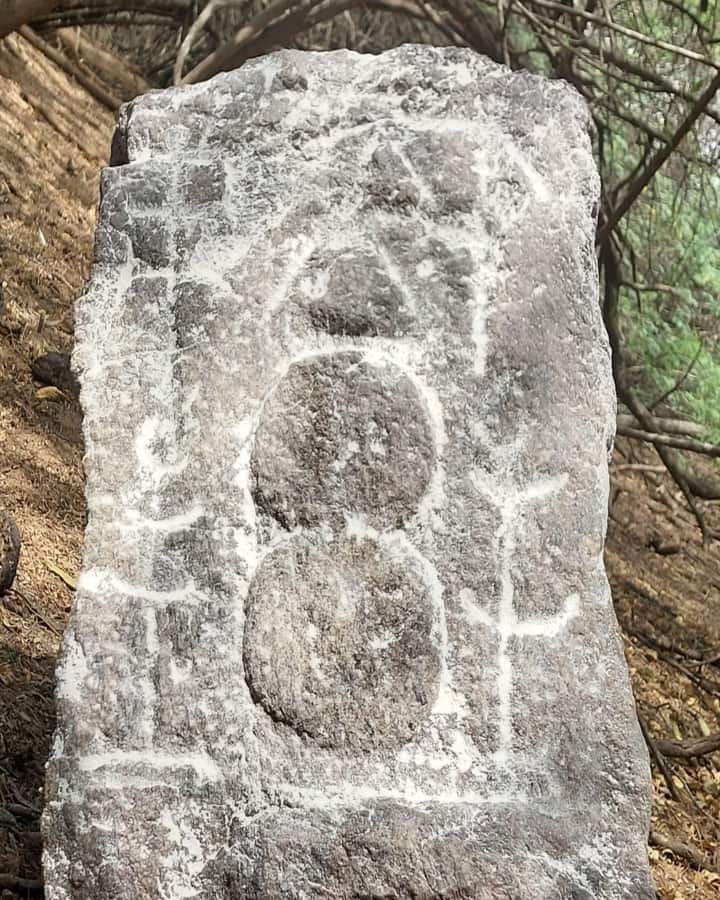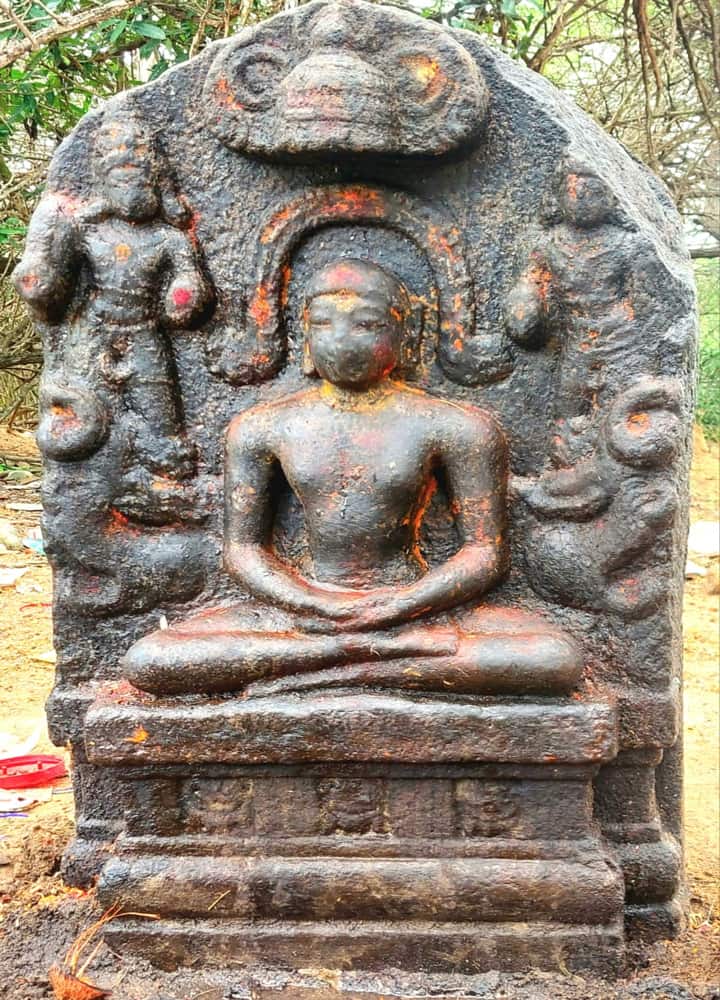The spread of Jainism across the southern part of India, including Tamil Nadu, comes to light every now and then as historians make discoveries. One such was made at Siruganur village in Sivaganga district of Tamil Nadu where a statue of Lord Mahavira was found.
Interestingly, the Jain spiritual leader is worshipped as Gundodi Kali by the residents here.
On receiving this information, A. Manikandan, founder of Pudukottai Archaeology Research Forum, who is a research scholar in the Department of Ancient Science at Thanjavur Tamil University, visited the place along with a team, to conduct a study.
Sharing details about the sculpture, Manikandan told India Narrative: “The statue which is two-and-a-quarter feet wide and three-and-a-half feet high is of Mahavira Digambara, the 24 Tirthankara of Jainism. It depicts him in meditation. He has curly hair. The nose is slightly damaged at the tip while its ears are long and pierced while the lower lip is disfigured.”
According to him the design and style of the sculpture suggests that it belongs to 10th Century AD.
Incidentally, there is an extensive history of Jainism in Tamil Nadu. The Tamil-Brahmi inscriptions in the State dating back to 3rd Century BCE talk about Tamil Jains and their livelihood while those of 8th Century CE shed light on the presence of Jain monks in the area. Most of the kings and dynasties, including Kalabhra, Pallavas, Pandiyans and Cholas patronised Jainism.
Elaborating on the sculpture’s other features, Manikandan said: “It has a Prabha ring on the back of the head and top there is the crown and it shows a tree also. Mahavira is shown seated above three lion seals.”

Besides this sculpture, an engraved stone slab too was found 100 feet away from the statue. This dates back to 12th Century and has mukkudai or three umbrellas – the sacred symbol of Jainism — in the centre. It conveys donation of land for construction of a Jain school. “This can be deduced from the plow structure on the left side which indicates that it was given by farmers and the outline of the fence on the right points that it was agricultural land,” explained Manikandan.
Manikandan said further studies on this were required.




















